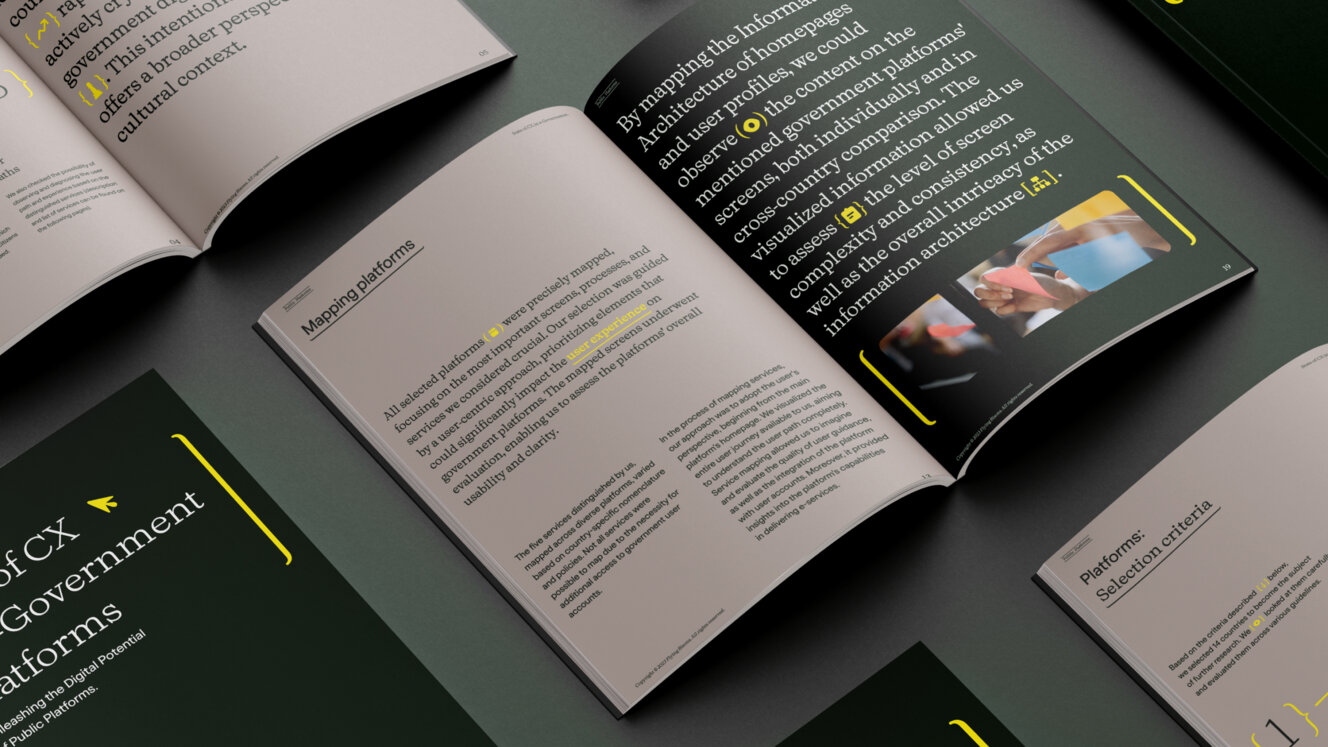
Sonia Przybył
-
Feb 28, 2024
-
5 min read
Eyes on the transformation of e-government platforms
The public sector worldwide is going through a digital transformation. We can see its effects on the development of infrastructure and social resources, which result in new tools that citizens can use to interact with government services.
We identified four emerging trends that lead to change and impact both long-term and short-term strategic goals.
Mobility: Services at citizens’ fingertips
There’s no denying it – today’s society is leaning towards mobile devices. And if almost everyone has a smartphone and is using it to access the Internet, then the government services can’t fall behind. They also need to be optimised for mobile, convenient, and easy to use. This means citizens should be able to access information and solve problems on the go. A seamless user experience makes government services more accessible, redefines the public sector, and brings the government closer to the people it serves. How to get it done? With a multichannel experience – a unified path considering all key interaction channels, such as desktop, mobile, and in-person.
Security: Protecting citizens
Technology progresses rapidly, but progress comes with various internal and external threats. They pose particular dangers to the public sector and trust in the entire state structure. That’s why it’s essential to implement cyber strategies based on concepts such as quantum encryption to build technologies that can ensure data security and create a cyber-resilient state system. Robust security measures should be a top priority as they will enable the creation of new operational forms and improved experiences for citizens.
Hyper-automation: Efficient processes and operations
The hyper-automation trend involves automating processes and operations using data and predictive models that manage resources and domains efficiently. It is gaining momentum. The goal is to have stable and durable automation that enables broad access and sharing of knowledge across various teams within an organisation. To make it work, e-governments also need software modernisation, including cloud-based solutions. After all, hyper-automation led to the development of sovereign clouds that restrict data availability within external jurisdictions and facilitate internal synergy.
Ecosystem: Connecting the dots
The ecosystem trend is among the most crucial in the public sector. It sets a clear goal: creating a single digital-analogue government ecosystem so the administrators can make targeted and data-driven changes in sustainable development at both the technological and physical levels.
How to seamlessly connect the analog with the digital? The answer is clear – enabling the centralisation of management within interconnected systems using datafication, the Internet of Things (IoT), and artificial intelligence (AI). Once we implement scalable user experiences, governments can manage their resources better. For example, they can focus on selected social groups for specific actions and communications. This single-model interaction allows for the development of connected, intelligent, and agile cities and countries.
Summary
The public sector can’t stand behind while everything is moving forward. The e-government services should be walking hand in hand with their citizens and follow useful trends to ensure that the customer experience remains at the highest level.








